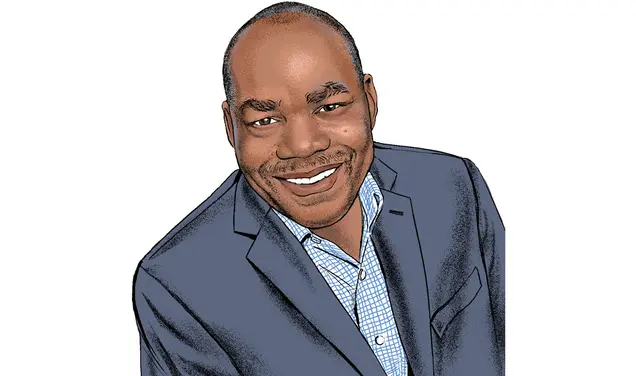Q&A: Politics Professor Layna Mosley Explains Tariffs
Imposing tariffs was among President Donald Trump’s campaign promises during the 2024 election, and it has been a major focus of his first few months in office. Uncertainty around the tariffs and their purpose has loomed large; in several instances, Trump threatened a tariff, but it never went into effect. As a result, consumers and businesses have been left scrambling to anticipate the potential impacts. PAW spoke with Layna Mosley, a professor of politics and international affairs whose research explores the connections between domestic politics and the global economy, in early May about tariffs and the long term effects.
Can you start by defining what a tariff is?
Well, the really easy definition of a tariff is a tax on imports. The way that tariffs exist is that they are set on specific products and they can also be set on specific products from particular countries.
Where do things stand with the tariffs imposed by the Trump administration?
The trouble is that it changes every day. On April 29, the Trump administration reduced some tariffs on auto parts. In early May, there was a change to the de minimis rule; previously, this rule meant that direct shipments from an overseas vendor to a consumer in the U.S. with a value less than $800 would not be subject to standard tariffs. So, think Temu or Shein shipping directly to a U.S. consumer — it got around any tariffs that were in place. So that’s one change that’s very much in play, and remains despite a more recent shift in tariffs on Chinese goods. On May 12, the U.S. government announced a 90-day reduction of tariffs on Chinese goods from 145% to 30%. While still a higher tax, it generated a favorable reaction in financial markets. What remains less certain, however, is whether these reductions will stick, and what will happen in the negotiations. The uncertainty makes it difficult for firms considering their future hiring and investment plans, for instance.
One thing that may be important to think about is that some of the tariffs that are in place date back to the first Trump administration. There was a lot of frustration that it was violating U.S. commitments under the World Trade Organization, and there was an expectation that if Democrats won in 2020 that the tariffs would be rolled back. It’s worth pointing out that Biden did not roll back many of those tariffs. The current Trump tariffs are much higher, but it’s worth keeping in mind that we went from a few tariffs — not none — to tariffs everywhere.
Why are tariffs used as a political tool? What is the administration’s goal?
Last week I was at the International Monetary Fund and World Bank spring meetings, and I was at a side event where Stephen Miran, who chairs the president’s Council of Economic Advisers, did a Q&A. My general take on this is that a lot of what he was talking about seemed internally inconsistent, which is to say it’s not entirely clear what are the administration’s reasons for using tariffs.
One general reason why a government might impose some kind of trade barrier, of which tariffs are one option, is that you want to protect domestic industries or convince companies to bring manufacturing back to the U.S. There’s a story here about domestic backlash against trade openness that I think is sometimes appealing from the politics of it. The government says I’m trying to help you, so it puts up tariffs, but it’s also problematic in a lot of ways.
A second reason is thinking of tariffs as a revenue source. If you have a substantial government budget deficit, which we have in the U.S., then you’re going to have to find money somewhere. The problem is it’s really hard to make enough in tariffs to close the deficit. Third, there’s an argument out there that tariffs are a bargaining tool. The Trump administration is frustrated by bad behavior, so they say we’re going to raise these tariffs, and since the U.S. is an important export market for these countries, this move will bring them to the negotiating table. It does often feel that Trump sees tariffs as a nice stick with which to beat other countries.
The last argument is that we are facing a national emergency represented by our trade deficit and that is the basis for Trump claiming that the executive branch gets to make this trade policy in the first place. Trade policymaking authority belongs to Congress, but the IEEPA legislation says if there’s a national emergency, then the executive branch can temporarily grab control of trade policy. What’s funny is we’ve had a trade deficit since the middle of the 1970s, so I would say it’s definitely not a national emergency.
What are some of the consequences of tariffs?
The most obvious thing with tariffs is that prices are going to go up for consumers. So that means we’re going to see more inflation and it’s probably going to be bad for economic growth. There's actually some interesting evidence to suggest that when you have tariffs, sometimes companies that make the same product but are making it in different places that don’t have such high tariffs go ahead and raise their prices too, because they can. That could be a benefit to some businesses, but terrible for consumers. The general reputation of the United States with respect to whether it respects its international commitments may suffer. Lastly, the dollar has been the main global reserve currency, but that standing could be at risk. It’s not clear what would replace the dollar right now, but that could be a long-term consequence as well.
People have turned to stockpiling goods and other means to prepare. What have you observed?
I have friends who hurried to buy cars last month because they knew the tariffs were coming. If you look at recent data, it looks like everything is fine. People are buying stuff. There’s activity, right? But then, of course, you worry that once these things are all in place, then you’re going to see things go off a steep cliff. For Americans whose retirement savings are tied to the stock market, there’s a lot of concern about whether the declines we’ve seen in asset markets are going to be permanent or is this just a little blip because of the effect of tariffs. I don’t know the answer to that. I’m a little pessimistic about that.
What typically happens when people are concerned like this is they often will put off bigger purchases and refrain from consumption. So it’s possible that we’ll see savings go up. There’s already some evidence of falling consumer demand for things like going out to restaurants and other discretionary spending going down. And of course, if there’s higher inflation absent of people’s wages going up, there’s going to be a decline in our purchasing power as consumers. Some of these same issues will arise for businesses. The general finding is that when there's a lot of policy uncertainty, we tend to see firms holding off on making longer term investments. That might mean you’re not investing in new technologies because you’re doing a kind of wait-and-see approach or you’re making new investments, but you’re not doing them in the U.S. That’s interesting because that would then run counter to the idea of tariffs benefiting the U.S.
Where do we go from here?
Experts suspect at some point these tariffs are going to end. I think that to save political face, there’s going to have to be some concession that the president gets from China, for example, where he can sort of declare victory publicly and then sort of walk the tariff back. I do think Trump seems to pay attention to things like the stock market, so if the numbers start to not look good, he’ll probably walk things back, but I think it’ll take a while. So I would predict in a year’s time we’re not going to have a large tariff against Chinese imports.
Interview conducted and condensed by C.S.












No responses yet